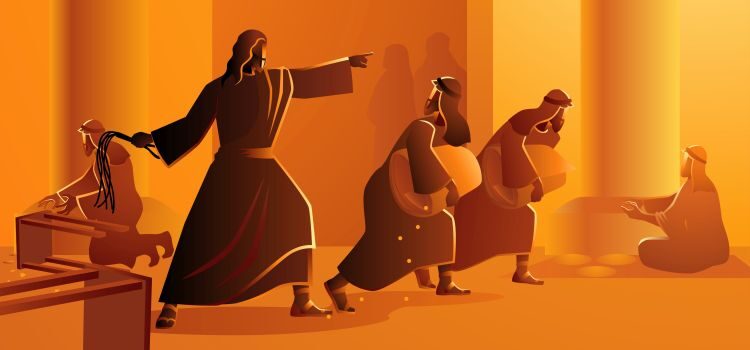
Hello everyone,
Welcome to the latest issue of our church newsletter. Our newsletter is sent out regularly to share reflections from services, Bible readings and church news to our church family. You can find previous issues on our church website here. We would love to hear from you and are always looking for uplifting and encouraging content to share in future issues of this newsletter. If you have any ideas or content that we can share, please do email them to Louise (publicity@christchurchuxbridge.org.uk)
We start with our opening prayer:
Lord, we do not know how or when you will call us to serve you.
We do not know when we may have to face difficult times,
or when the difficult times we face now may end.
We do not know how and when you will come to us.
Help us to pray and learn so that, when you call us,
we may be ready.
Help us to find courage to change,
to trust you and to listen for your call. Amen.
(Taken from Roots)
Reflection from 20 November
Reading: Mark 11:11-25
When I first looked at this passage I was intrigued by it. The fig tree was, to outward appearances at least, healthy. Yet it died overnight. This is one of the miracles in the New Testament that attest to Jesus’s power and authority over the forces of nature. But this miracle is a bit of an odd occurrence. We’re used to hearing stories about Jesus that involve miraculous healing or the restoration of life. But, in this story, something that was full of life dies. And there appears to be no good reason behind Jesus’s condemnation of the tree.
Mark tells us that it wasn’t yet the season for fig trees to bear fruit. Yet, Jesus seems to be so angry that the tree had failed to live up to his unreasonable expectations of it that he strikes it dead on the spot. This isn’t the Jesus I usually encounter in the gospel stories. In this story he comes across as petulant, acting like a toddler that flies into a tantrum when it doesn’t get its own way. And the miracle looks more like a misuse of his marvellous powers. So, I thought that, today, we could take a closer look at the story.
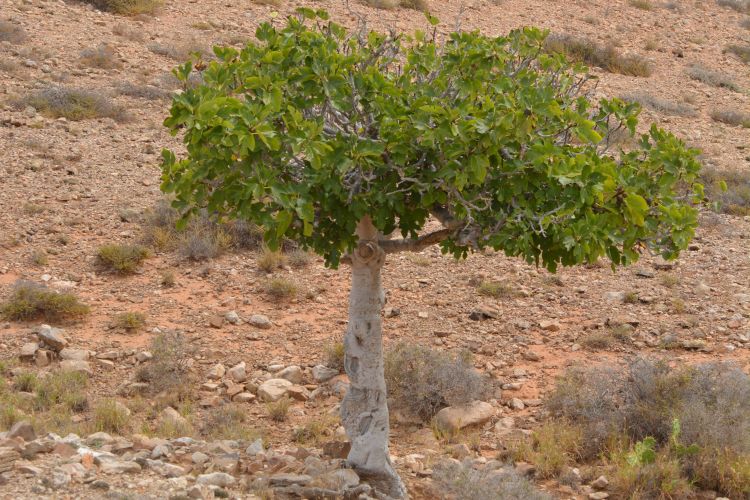
But, we shouldn’t look at the fig tree story in isolation. Mark has used a technique that occurs often in his gospel, whereby he brings two stories together in a sandwich. In this case, the story of the fig tree is split into two, so the two parts become like slices of bread that surround the sandwich filling which is the episode in the temple. This sandwiching of two stories indicates that there is a relationship between them. They have to be read together because each story will help us to understand the other.
To understand the purpose of the temple, we first need to understand God’s original intentions for the people of Israel. God had intended the people of Israel to be the light of the world. But their understanding of that vocation had become distorted with the result that by Jesus’s day the nation was pursuing a narrow, nationalistic religion which condemned the rest of the world rather than enlightening it.
God had originally intended the temple to symbolise his presence with the nation of Israel for the sake of the world. When King Solomon dedicated the temple he had constructed; he prayed:
“… will God really dwell on earth? The heavens, even the highest heaven, cannot contain you. How much less this temple I have built!” (1 Kings 8:27)
Solomon recognised that, in reality, God couldn’t be confined within a building.
In Isaiah chapter 56 we read:
“To the eunuchs who keep my Sabbaths, who choose what pleases me and hold fast to my covenant — to them I will give within my temple and its walls a memorial and a name better than sons and daughters; I will give them an everlasting name that will endure forever. And foreigners who bind themselves to the Lord to minister to him, to love the name of the Lord, and to be his servants, all who keep the Sabbath without desecrating it and who hold fast to my covenant — these I will bring to my holy mountain and give them joy in my house of prayer. Their burnt offerings and sacrifices will be accepted on my altar; for my house will be called a house of prayer for all nations.”
So, God loved the whole world, not just the people of Israel, and he pronounced that all people were welcome to his house. Yet by Jesus’ day, the design of the temple sought to exclude certain groups of people.
The temple contained a number of courts. Anyone wanting to reach the innermost part of the temple had to go from one court to another in order to get there. Gradually these courts excluded more and more people such as women and foreigners, until only the priests were left.

The outermost court was the Court of the Gentiles. It was not designed as a place where Gentiles could go to pray; it was a place beyond which they were not permitted to go. Indeed, signs displayed in that court stated that any Gentile proceeding beyond it would suffer death.
In those days there were Israelite revolutionaries who were prepared to use violence to bring about their nationalistic dreams of freeing Israel from Roman rule. The temple was the symbolic focal point of their ideology. It should have been a house of prayer that helped people to come into the gracious presence of God, but in fact it symbolised violence towards outsiders and division between Israel and other nations.
The revolutionaries believed that, through the sacrificial system practised at the temple, they were guaranteed forgiveness and fellowship with God regardless of how they behaved outside the temple precincts. In that way the temple had become their “den”; their place of safe refuge.
Many commercial activities took place in the Court and those who carried on those activities exploited people. For example, all male Jews had to pay a tax to the temple. The tax funded the daily sacrifice made on behalf of the whole of the Jewish population to atone for their sin. The tax had to be paid using a special currency: the temple shekel. Other currencies bore images of heathen gods or of the Roman emperor and so were unacceptable inside the temple. But the fees charged for changing secular coinage into temple currency were very high.
Here’s another example. Worship involved sacrificing unblemished animals. Animals that worshippers had brought with them were routinely examined and pronounced imperfect, but replacements could be purchased from the traders in the Court of the Gentiles, at exorbitant prices.
All of this commercial activity was controlled by the chief priests. They were the aristocracy of their day and profited at the expense of ordinary pilgrims. The people of Israel and the temple had lost sight of their original purpose: they had lost awareness of God’s presence among them.
The common interpretation of Jesus’s actions in overturning the tables of the money changers and driving out those who were selling sacrificial animals is that he was expressing anger at the commercial exploitation of innocent and genuine pilgrims. These innocent people had often travelled a long distance to get to the temple, with the earnest intention of praying and offering the sacrifices appropriate to their particular circumstances as set out in the law given to Moses. They were being taken advantage of by the powerful temple authorities and had no means of fighting back, so Jesus must have been fighting back for them. According to this interpretation, he was purifying the temple so that it could return to its function as a house of prayer.
There are, however, some objections to that interpretation.
Note that it wasn’t just the sellers of animals who Jesus ejected, but the buyers too. What objection could he have had against these innocent folk who were being swindled? None of the onlookers are cheering Jesus on; they are baffled by his actions.
The commercial activity in the Court of the Gentiles wasn’t something that had sprung up overnight. The first verse of the passage we are looking at today tells us that Jesus had visited the temple the day before and looked around, but hadn’t taken any action then. So, his protest wasn’t a spontaneous outburst of anger; he had thought about it overnight. And when his protest was carried out, it’s unlikely that it would have stopped the trading for all time. The market stall holders would probably have been back in place the next day.
Even if Jesus had restored quiet to the Court of the Gentiles to enable non-Jews to pray there uninterrupted for an hour or two, his actions did nothing to overcome their exclusion from the rest of the temple precincts.
In the temple, power was wielded for the benefit of those who were already powerful. Those who held power had turned in on themselves rather than reaching outwards with generosity towards the rest of the world.
I’d like to put to you an alternative interpretation of the episode in the temple. It is that Jesus was condemning the temple itself and the role it had come to hold within the life of the nation rather than cleansing and restoring it.
Jesus quoted the prophet Jeremiah:
“he said, ‘Is it not written: “My house will be called a house of prayer for all nations”? But you have made it “a den of robbers”.’
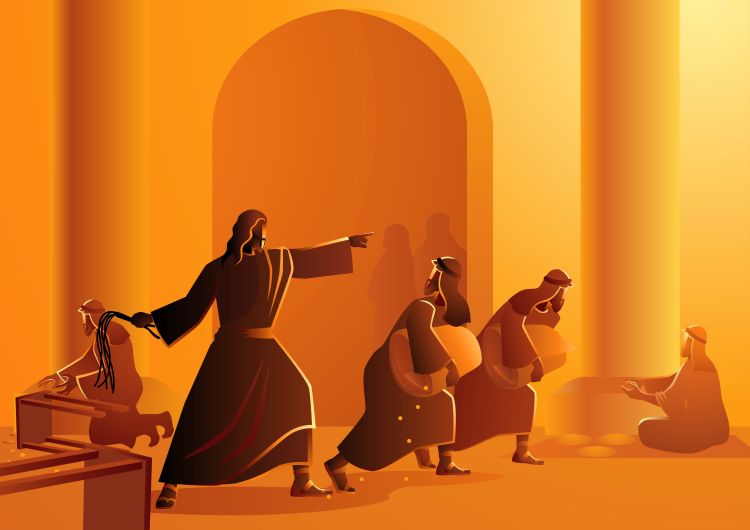
Here’s a slightly longer quote from Jeremiah that sets Jesus’s quote in its wider context:
‘This is the word that came to Jeremiah from the Lord: “Stand at the gate of the Lord’s house and there proclaim this message:
“‘Hear the word of the Lord, all you people of Judah who come through these gates to worship the Lord. … Reform your ways and your actions, and I will let you live in this place. Do not trust in deceptive words and say, “This is the temple of the Lord, the temple of the Lord, the temple of the Lord!” If you really change your ways and your actions and deal with each other justly, if you do not oppress the foreigner, the fatherless or the widow and do not shed innocent blood in this place, and if you do not follow other gods to your own harm, then I will let you live in this place, in the land I gave your ancestors for ever and ever. But look, you are trusting in deceptive words that are worthless.
“‘Will you steal and murder, commit adultery and perjury, burn incense to Baal and follow other gods you have not known, and then come and stand before me in this house, which bears my Name, and say, “We are safe”—safe to do all these detestable things? Has this house, which bears my Name, become a den of robbers to you? But I have been watching!” declares the Lord.’
(Jeremiah 7:1-11)
Jeremiah goes on to encourage his listeners to reflect on the fate of the shrine at Shiloh, which by his day had been reduced to ruins, and he warns that the temple would share the same fate. Something that was once pronounced holy had been abused and sullied and would be swept away.
We know that Jesus told parables: stories that, on the surface, dealt with familiar things, but which, when considered carefully, had a deeper message to convey. From time to time Jesus also took on the role of a prophet, proclaiming God’s message. Sometimes prophets used not only their words but also their actions to reinforce their message. I’d like to suggest that this is what Jesus is doing here.
In Jesus’s day the temple was the only place where Jews could make sacrifices. That was the whole reason for the temple’s existence. By stopping the sale of sacrificial animals and the payment of the temple tax that funded temple activities, albeit just temporarily, Jesus was taking away the foundations of the temple’s existence. Shortly after, through his death on the cross, Jesus made the temple redundant. No other sacrifice is now necessary to receive God’s forgiveness. Faith in Jesus brings forgiveness. It is no longer necessary to go to the temple to meet God. Through the Holy Spirit, we can meet him in the person of Jesus wherever we may be.
We’ve spent a lot of time thinking about the temple and its fate, but let’s briefly go back to the fig tree, which is where we started. Mark’s story of the fig tree wraps around the episode in the temple. Some commentators encourage us to view this story as a parable that Jesus told through his actions rather than his words.
Jesus diagnosed that, although the leaves of the tree gave the appearance of health, the tree wasn’t going to produce the fruit that could reasonably be expected from it in the future. He concluded that giving it a second chance to prove its value, supported through careful pruning and feeding in order to nurture fruit, was not the right course of action. Since the tree would never produce figs, which was the rationale for its existence, the only thing to do was to destroy it.
It is likely that Mark intends the story of the fig tree to help his readers grasp the radical view that Jesus took towards the temple. Jesus’s condemnation of the fig tree points towards the fate of the temple. Mark reinforces that in the exchange about prayer that comes right at the end of the passage.
Note that Jesus doesn’t refer to hurling any mountain into the sea, but this mountain, Mount Zion on which the temple stood. He also says that action would be in faith, in other words in accordance with the will of the Father.
Throughout his ministry Jesus drew to himself the very people that the temple excluded; Gentiles, women, anyone considered impure. He healed them, taught them, fed them and restored their social standing. He welcomed them and loved them into God’s kingdom. He tore down barriers between people and between people and God rather than maintaining them or creating new ones.
We are called to be Jesus’s body in the world today. Let’s keep looking to him and checking back that the way we behave is in keeping with his purposes and priorities.
Cathy Smith
Readings for 27 November
Matthew 24:36-44 (NIV)
The Day and Hour Unknown
36 “But about that day or hour no one knows, not even the angels in heaven, nor the Son,[a] but only the Father. 37 As it was in the days of Noah, so it will be at the coming of the Son of Man. 38 For in the days before the flood, people were eating and drinking, marrying and giving in marriage, up to the day Noah entered the ark; 39 and they knew nothing about what would happen until the flood came and took them all away. That is how it will be at the coming of the Son of Man. 40 Two men will be in the field; one will be taken and the other left. 41 Two women will be grinding with a hand mill; one will be taken and the other left.
42 “Therefore keep watch, because you do not know on what day your Lord will come. 43 But understand this: If the owner of the house had known at what time of night the thief was coming, he would have kept watch and would not have let his house be broken into. 44 So you also must be ready, because the Son of Man will come at an hour when you do not expect him.
Further readings from the lectionary this week are as follows:
- Isaiah 2:1-5
- Psalm 122
- Romans 13:11-14
Our worship
We meet at 11am for our Sunday services, which are also live-streamed on our Facebook page. If you wish to view our services online, you can find them at www.facebook.com/christchurchuxbridge. You do not have to be a Facebook user to watch them – our services are publicly viewable. You can also view a recent service on our church website. Our service this week will be a communion service with welcoming of a new member and will be led by URC minister Revd Jon Dean. You can find the order of service here.
If you are unable to join us in person or online for our Sunday services, but would like to receive a recording of them on a memory stick to watch at home, please let us know.
Forthcoming services
27 November – Revd Jonathan Dean (URC minister) – communion
4 December – Cathy Smith (Methodist local preacher)
11 December – Christ Church worship group – parade and gift service
18 December – Christ Church worship group – carol service
Christmas at Christ Church
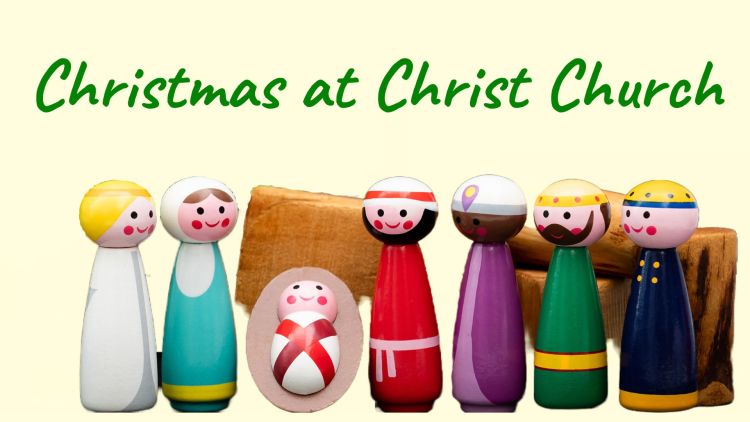
Advent Bible Study – Tuesdays 11am from 29 November until 20 December
Join us in the chapel or online via Zoom as we reflect on the theme of making room at Christmas through some of the key players in the Christmas story. Please see Louise for more details.
CTU Christmas Carols at the Pavilions – Wednesday 7 December, 4.30pm
We have been asked to provide a group to sing some Christmas carols at the CTU Christmas Carols at the Pavilions on Wednesday 7 December at 4.30pm. If you would be interested in taking part, please let Louise know.
Gift service – Sunday 11 December
Our gifts from this year’s gift service will be donated to the Salvation Army’s Christmas Present Appeal. If you would like to bring a gift, new and unwrapped gifts and toys for children would be welcomed. Our service on this Sunday will be a parade service and will also feature a scratch nativity.
Carols and Mince Pies – Friday 16 December, 12noon
Our annual carols and mince pies will take place in the chapel on Friday 16th December at 12noon. All welcome.
Carol Service – Sunday 18 December
We are planning a Songs of Praise style service for this year’s carol service and would like members of our church family to choose a carol to share as part of this. If you have a carol that you would like to be included in this service, please let Joanne know.
Christmas Day service – Sunday 25 December, 11am
Our Christmas morning service will be led by Methodist local preacher, Sue Lloyd.
Church charity news
Children’s Christmas card competition
Congratulations to Amirah who was the winner of our 50th Anniversary Children’s Christmas Card competition. Christmas cards featuring Amirah’s winning design will be available at coffee mornings from 19 November at £2.50 for a pack of 5 cards. All profits from sales of the Christmas cards will be donated to Halo.
You can find more details about HALO Children’s Foundation, our church charity for 2022 at:
www.christchurchuxbridge.org.uk/activities/churchcharity2022To make a donation to our church charity online visit www.justgiving.com/fundraising/christ-church-halo2022

Operation Christmas Child
The final total of CC shoe boxes for Samaritan’s Purse’s Operation Christmas Child was 44 – including some handed in after the deadline! Denise and I think that’s a few more than last year. They came from our congregation, from our Brigade families, from building users and from complete strangers to us who got to know we were collecting.

Graham took them to an area collection at the Junior School in Chorleywood. Denise took the final few to The Entertainer in the Pavilions shopping centre.
A huge thank you to all who contributed – faces will smile across the world!
Graham & Denise Hinton
From our denominations
Community Carol Service – 4 December
The Circuit will be hosting a community carol service at the Lighthouse Centre, Queen’s Walk, South Ruislip, Middx HA4 0NL. The service is on 4th December, starting at 4pm. Come and join us for a fun time carolling this Advent.

Carol Singing with LCRF – Thursday 1 December, Oxford Circus Underground, 3-8pm
We hope to raise two or three thousand pounds for LCRF (London Churches Refugee Fund). Please, if possible, let us know when you plan to come (3-4.30, 4.30-6 or 6-8pm) and if you can bring a nice loud instrument. Email Maggie Hindley (m@maggiehindley.org) and she will send a reminder nearer the time.
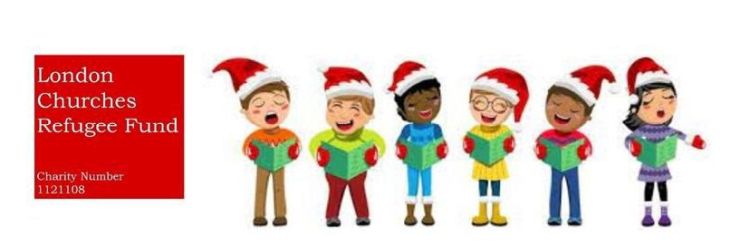
PS We also need people who don’t mind not singing to shake buckets.
PPS Santa hats provided – but Christmassy dress is most welcome and helps attract attention.
Hillingdon Warm Spaces
Drop-in for warmth, company and a cuppa.
Mondays to Fridays
9.30am – 1.30pm Hillingdon Park Baptist Church (Tel: 01895 814424)
Mondays
10am – 12noon St Margaret’s (Tel: 01895 258766)
10am – 2pm Christ Church (Tel: 01895 258956)
Wednesdays
10am – 3pm Salvation Army (Tel: 01895 234088)
10am – 11am Waterloo Road Church (first Wednesday of the month only) (Tel: 01895 257663)
Thursdays
10am – 3pm Salvation Army (Tel: 01895 234088)
Fridays
11am – 1pm St Margaret’s (Tel: 01895 258766)
Saturdays
9.30am – 11.30am Waterloo Road Church (first Saturday of the month only) (Tel: 01895 257663)
Other activities with a warm welcome
Tuesdays and Thursdays
10am – 2pm Café at Christ Church (Tel: 01895 258956)
Monday to Friday
12noon Lunches at Hillingdon Park Baptist Church (Tel: 01895 814424)
A warm spaces register can also be found online at https://www.warmwelcome.uk/
Children’s Corner
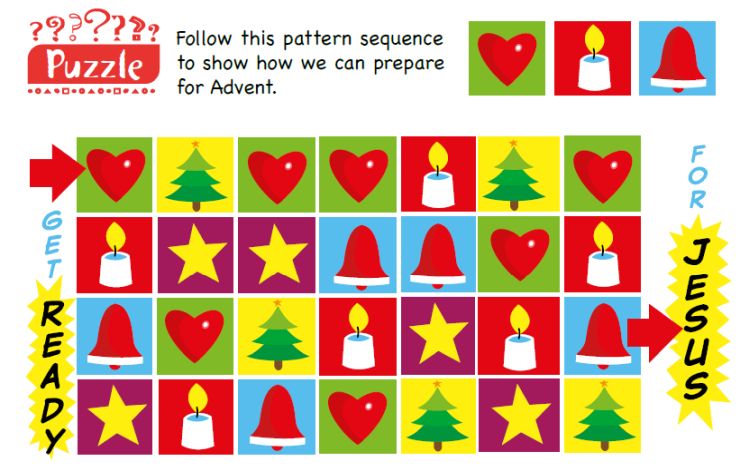
Praying for other churches
This week we hold Trinity, Harrow (URC & Methodist) in our prayers.
Closing prayer
Lord, we pray that in all our preparations
for the coming week and for Christmas,
we may find time to spend time with you.
Help us to be prayerful, watchful,
and full of hope for your coming. Amen.
(Taken from Roots)
